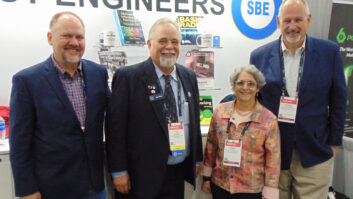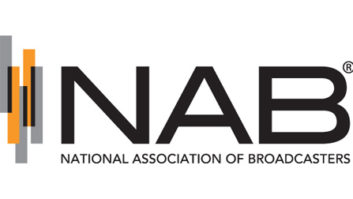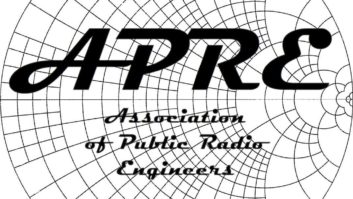Washington — Two veteran engineering consultants are asking the Federal Communications Commission to allow AM broadcasters an opportunity to improve nighttime service while avoiding increased interference.
They say a rule modification eliminating the so-called ratchet clause would help stations remain competitive by providing better services for local audiences at night. The FCC is accepting comments on the Petition for Rulemaking (RM 11560) until Oct. 9.
Some broadcast engineers agree that the ratchet clause has, in some cases, delayed and added expense to AM nighttime projects. At least one downplayed the seriousness of the complications the ratchet clauses causes.
Unintended consequence
Ben Dawson, managing partner of Hatfield & Dawson Consulting Engineers, and Ron Rackley, a partner in du Treil, Lundin & Rackley, feel the timing may be right for their request, in light of recent commission actions aimed at making AM more competitive.

Site work at Clear Channel’s AM triplex in Boston. Opponents of the ratchet clause say its effect is to discourage AMs from making antenna system improvements. The ratchet clause appeared in a FCC rulemaking footnote in 1991 with the hopes of reducing nighttime interference from modified facilities. Dawson and Rackley believe the clause has had a negative impact on AM radio stations wishing to improve their nighttime signals.
The ratchet clause, from footnote 1 of FCC rules 73.182(q), reads: Those interferers that contribute to another station’s RSS (root-sum-square) using the 50% exclusion method are required to either reduce their contributions to that RSS by 10% or to a level at which their contributions no longer enter into the 50% RSS value, whichever is the lesser amount of reduction.
Root-sum-square refers to a way of adding the effective power of multiple interfering signals, Rackley said.
The clause requires AMs that want to modify their signals to demonstrate an overall reduction in the amount of skywave interference they cause to certain other AMs. While newer stations have come on the air accepting interference from existing AM signals, those existing signals are now expected to provide additional protection to the newer ones, even if there’s a chance for the existing signal to move to a better site or improve its directional pattern.
The ratchet clause got its name, some believe, from FCC staffers discussing means to “ratchet down AM interference.” Rackley and Dawson believe it has had the opposite effect of penalizing existing stations.
Such stations have the greatest opportunity to provide interference-free nighttime service by protecting or improving their legacy service areas, they feel; but the rule has prevented such stations from making improvements and makes them less competitive because of ever-increasing ambient noise levels and increased skywave interference from newer stations.
Dawson and Rackley also contend that a subsequent FCC decision allowing AMs to rebroadcast their signals on FM translators in some cases (RW, Aug. 1, 2009) has recognized that the underlying premise of the ratchet clause is defective and has had an opposite effect to what was intended.
“We don’t believe the FCC thought this through clearly when it was enacted. Many stations have since been locked down and unable to improve nighttime coverage. They have to take a severe hit in power reduction if they want to improve facilities,” said Rackley.
AM broadcasters at the time of the rulemaking in 1991 had been clamoring for ways to reduce interference, and the FCC took the ratchet clause approach, Rackley said.
He said the footnote makes overall power reduction the only remedy available when radiation must be decreased toward a station that receives theoretical interference. The effect is to discourage AMs from making antenna system improvements.
Service reductions
A large number of AM stations could benefit from the rule modification, according to Rackley, by improving the efficiency of their nighttime directional arrays.
“The commission certainly appears to be sympathetic to the plight of AM broadcasters right now and is looking for opportunities to help them remain competitive,” Rackley said.
Dawson said the ratchet clause has been a factor in at least half of the nighttime facilities changes applications his firm has looked at since its adoption in Report and Order to Docket 87-267 by the FCC.
That R&O originally was a “Review of the Technical Assignment Criteria for the AM Broadcast Service” but morphed into the expanded-band allotment rulemaking, which changed many criteria for calculating interference between stations and added the ratchet clause, Rackley said.
The clause “is particularly onerous in cases where old stations are significant contributors to RSSes of newer stations from the post-World War II station explosion, but were prevented from power increases to serve expanding metros because of the old 5 kW regional channel power limit,” Dawson said.
His firm has received several dozen waivers of the ratchet rule, but “we’ve also looked at that many or maybe more cases where it would have caused a significant service reduction and so prevented an improvement or site change,” he said.
The petition for rulemaking was filed in late August, and the FCC invited comments on the proposal in September. “The FCC has so many (ratchet clause) waiver requests pending that they can no longer ignore the issue,” Rackley said.
The commission has approved waivers for stations that meet certain criteria centered on the necessity of making site changes due to circumstances beyond the control of their license, the petitioners noted.
Further, Rackley and Dawson believe the FCC already has invalidated the principle upon which the ratchet clause was adopted. In a 1997 letter, the FCC wrote an opinion regarding an unbuilt station KIOQ(AM) in Folsom, Calif., whose licensee had proposed modifying an outstanding construction permit.
Dawson and Rackley state that “the FCC clearly explained in its KIOQ decision that groundwave coverage, which is present 100 percent of the time, has primacy over signal levels calculated based on 10 percent of time assumptions.”
They conclude that the ratchet clause forces an AM station that is making a change, to reduce its groundwave field strength in a certain direction to reduce interference that theoretically occurs 10 percent of the time at another station. They said the ratchet clause is upside-down, in principle, from the doctrine the FCC employed in the KIOQ decision.
Several AM owners that could benefit from the modification support the elimination of the ratchet clause, they believe.
Added complexity
“I’m in total agreement with the filing,” said Norman Philips, vice president of engineering for Gap Broadcasting/GapWest Broadcasting.
He said he knows of several instances in the past 15 years where AM stations could have improved coverage in their communities of license by relocating or improving their nighttime directional arrays. Such improvements “were not made, due to the ratchet clause.”
John Warner, vice president of AM engineering for Clear Channel, said the clause “adds a lot of complexity to any project. I’m not aware of any recent AM projects we’ve had to cancel because of it, but it typically results in a more complex array, say a four-tower array instead of a three tower — and of course, additional expense.”
Clear Channel has had to ask the FCC for waivers to the ratchet clause when faced with a forced relocation of an AM transmission facility, Warner added.
“The FCC has been very evenhanded and fair in those cases where we have asked for the waiver. However, it just is another layer of complication for us to see our projects through,” Warner said.
At least one AM radio technical consulting firm hasn’t found the ratchet clause requirement particularly burdensome.
“In general terms, we encounter this rule section in about half of our AM nighttime allocation studies, but we have found that it is not usually the critical factor in a station’s ability to relocate or upgrade (nighttime service),” said Stan Salek, senior engineer at Hammett & Edison Inc.
He has reviewed the rulemaking petition, but his firm “does not have a position” on the proposal.
“We are supportive of the FCC’s efforts on AM technical improvements, but subsequent events to the FCC’s 1991 Report and Order to Docket 87-267 on the matter seem to have introduced problems. One example is the establishment of nighttime IBOC service and its effect on overall noise levels in the band,” Salek said. “It is certainly possible that the intent of the ratchet clause is largely undone in practice by this and other factors.”











